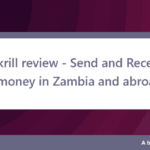Learn How To Reduce TTFB In WordPress, the toughest thing to improve in WordPress is TTFB, or Time to First Byte. This guide will help you incorporate some simple steps to improve TTFB.
What is TTFB?
TTFB, which stands for time to first byte, is the amount of time it takes to retrieve the first byte of data from the web server when a client makes an HTTP request to it. TTFB is an important aspect of website optimization because the faster the TTFB is supplied to the user the faster the requested resource can start.
The first Byte time consists of three different components.
The time required to send the HTTP request The time needed for the server to process the request The time needed for the server to send back the first byte of the response to the client The TTFB can be visualized for a specific resource using a site like WebPageTest. After running https:/rainz.me/shop/ through the check, for example, we can see that the TTFB for the initial HTML document took 161 ms.
To put it simply, this is a measure of how long a client has to wait before the server receives its first byte of data. The longer it takes to get the data, the longer it takes for your page to show up. A common misconception is that this is measured after DNS lookup times, but in networking, the initial TTFB measurement also involves network latency. It requires a 3-step phase, and there may be delays and latency somewhere in between, adding up to your total TTFB.
What is a good TTFB in WordPress?
The time to first byte will differ considerably depending on what type of content you serve (static vs dynamic), the configuration of your server, etc. The determination of what is a good TTFB number is therefore difficult to answer and variable depending on your situation. Everything with a TTFB below 100 ms is great on average though. Anything between 200-500 ms is normal, between 500 ms-1 s is less than optimal and anything larger than 1 s will generally be further investigated.
It should be noted, as stated, that these times are average averages but do not apply to all websites. It may be absolutely unavoidable, depending on the type of content and the nature of the query, that the TTFB is larger than 1 second.
How to improve your TTFB
Understanding which areas to develop for optimizing your TTFB is certainly quite critical. The next segment discusses a number of actionable things to be remembered when working towards increasing your first byte time.
In the complex content environment, in order to create a website, several processes and interactions have to be carried out. Such interactions take time, and will raise your TTFB accordingly. Implementing a caching function can help to reduce the drawbacks of load time, since it holds a cached copy of a previously requested pre-built page.
The well-known WordPress CMS has lots of caching content plug-in options.
Being aware of the TTFB of your website, and how to reduce it as much as possible, is a big move forward in maximizing the page speed of your website. Keeping up to date with the new releases of software, checking the load ability of your web server and introducing a caching system are a few ways to keep your time for first byte in check.
Need help? feel free to comment or contact me.








Cool